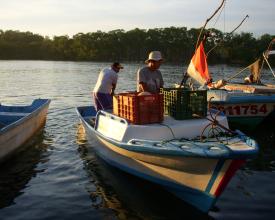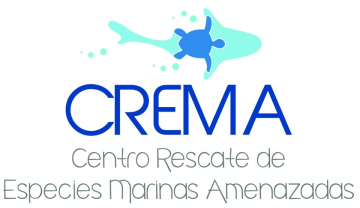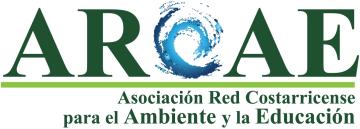
MPAs and Certified Sustainable Small-scale Fisheries
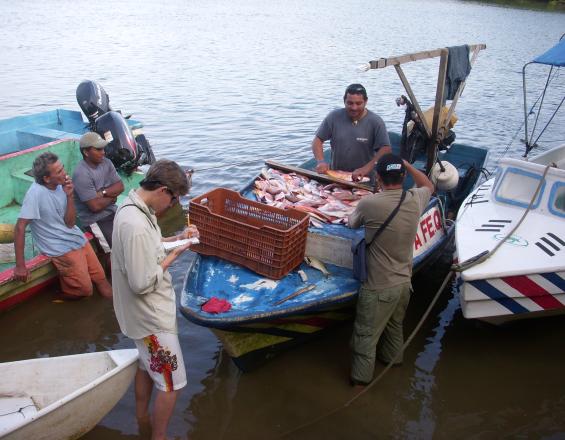
The solution is adding value to the artisanal bottom longline catch in Costa Rica. A stock assessment based on 10 years of landing data (snapper lengths) showed that the fishery is fully exploited to slightly overfished. Therefore, a local management plan was put in place that caps effort to sustainable levels. At the same time, the size of the area's multiuse MPAs have been increased to better attenuate impacts from destructive fisheries. Value chain improvements including a product certification strategy are being implemented to raise and stabilize fisher earnings.
Context
Challenges addressed
Climate change poses the greatest threat to the sustainable development of Costa Rica's small-scale fisheries. Rising coastal water temperatures and the resulting impacts have the potential to severely affect fish assemblages and coastal ecosystems, and degrade fisher livelihoods.
This is worsened by a management failures in developing nations like Costa Rica, where fishery governance is shared between the National Fishery Institute and the Environmental Ministry, both who struggle to effectively communicate between themselves and with fishers.
Unselective, destructive, and illegal fisheries that operate within the Bejuco fishing grounds are further impacting the snapper stock and its resilience to changing environmental factors. Of these, the shrimp trawl fishery poses the greatest threat to the local artisanal communities as trawlers actively target snappers because shrimp are already overfished.
Location
Process
Summary of the process
The project is grounded in science. Catch composition data and fisher ecological knowledge have been methodically collected and analyzed in order to determine the environmental impacts of bottom longline use as well as the socio-economic conditions of this artisanal snapper fishery. A management plan was then devised based on these results and used to scientifically justify the development of multi-use MPAs within the Bejuco fishing grounds in order to promote the sustainable extraction of the local snapper resource. In order to promote the fishery’s development and local governance strategies, project stakeholders are applying for an international sustainability certification, based on the previous analysis of bottom longline impact and management. The project looks to use a certification to create innovative markets that promote responsible consumption patterns and ultimately fishery economic progress. A snapper certification, along with the other project components, will be used to promote the fishery’s ability to co-manage these coastal resources.
Building Blocks
Catch Composition Data Collection and Analysis
In order to develop and manage an environmentally sustainable fishery, a number of performance indicators need to be established for its target species, common bycatch species, environmental factors, and management regimes. Examples of these for the Bejuco artisanal bottom longline snapper fishery include the stock's status, bycatch and discard rates, endangered and/or protected species catch rates, gear impacts to the seafloor and associated benthic organisms, local management plan, and national fisheries management capacity. Since 2007, the catch composition of the Bejuco bottom longline fishery has been continuously monitored by dock side observers and researchers who accompany fishers on their nightly trips. This information, along with the collection of fisher ecological knowledge, has allowed researchers to identify many of these indicators. In close collaboration with the national government, protected area and management plan development initiatives are also taking shape.
Enabling factors
Collaboration between researchers (NGO collaborators and university students) and the local fishers needs to exist. A certain level of trust must be established between both parties in order to create this type of environment. Project researchers and other associated NGO members were invited into the fishing communities by fishers themselves, thus facilitating this process.
Data collection expenses have been primarily shouldered by international NGOs (grants) and research students (institutions).
Lesson learned
A relationship based on mutual trust must be established if long term data collection efforts are to be successful. Fishers must know that researchers will not use catch information against them to further compromise their industry, and researchers need to be assured that they have full fisher support and open access to their operations. Data must also be recorded throughout the entire year (or fishing season) and not just “when the fishing is good”. There are months when this fishery produces almost no snapper. This data is valuable. Researchers ran into a statistical analysis problem because they stopped taking data when the catch per unit of effort dropped. This created a bias in their analysis.
To facilitate the long term collection of data, researchers are working with the government to train fishers to record their own catch and determine the reproductive states of certain species. A smartphone App is also being developed to facilitate the data collection process by fishers.
Artisanal Snapper Fishery Management Plan
Catch composition data, a snapper stock analysis, and fisher ecological knowledge gathered through fisher led focus groups, workshops, and other participatory events were compiled into a management plan that was evaluated by and eventually approved by the two fishing associations. The plan is a local governance tool that details fishing methods and measures that are undertaken to maintain a sustainable snapper fishery. This plan will be presented to other snapper fisheries on the Peninsula desiring to develop management strategies and tools. Co-management strategies are not recognized in Costa Rica, but approval of local management plans is a way to promote their development.
Enabling factors
Fishers must be willing to work with researchers to collect the information necessary for the development of a management plan. In addition to this, fishers must also be cognizant of what a sustainable fishery is and how one is governed. This means they will have to develop new fishing methods that maintain the fishery within sustainable production limits, as well as create systems of self-governance that regulate their activities.
Lesson learned
The term “management plan” has a negative connotation among snapper fishers. This is due to Costa Rica’s antiquated, top-down system of coastal resource governance. For years artisanal fishers have been told what, where, and when to fish through a series of national management plans that have neglected the local consultation process; therefor, researchers have had to use to term “sustainable fishing strategy” instead of “management plan”. The approval process has been time consuming and fishers are generally suspicious of another set of rules and regulations to follow. Project researchers had to identify key association members who were willing to dedicate time to learning and understanding the benefits of developing a sustainable fishery. These individuals then began to convince their fellow fishers of the strategy’s long-term value.
While local snapper fishers observe their fishery's strategy, the Costa Rican government has yet to recognize any co-management development initiatives.
Development of multi-use MPAs
Two multi-use MPAs have been developed between researchers, fishers, and the Ministry of the Environment in the district of Bejuco to better manage the local snapper stock. These areas allow for the use of artisanal bottom longlines (the preferred fishing gear of the area’s snapper fishers) and hand lines but do not permit more unselective methods to be used including shrimp trawl nets. Costa Rica’s coastal MPAs began as marine extensions of previously established protected terrestrial areas, and Bejuco’s MPA are no different. Their original intent was to protect sea turtles from shrimp trawlers, but they have evolved into more complex spatio-temporal coastal resource management tools.
The area’s MPAs provide a legal framework that protects the interests of local fishers against the industrialized shrimp trawl fleet (shrimp trawlers target snappers in the area because it is not economically viable to fish for shrimp in Costa Rica). Costa Rica is developing climate change adaptation strategies funded by the Adaptation Fund. Inherent in these is the continued development of protected marine areas and the feasibility of expanding the two existing areas is being discussed.
Enabling factors
Bejuco’s MPAs were established 10-15 years ago. Their original focus was rooted in sea turtle conservation and did not contemplate ecosystem management strategies. As the importance of the country's artisanal fisheries becomes more understood and appreciated, its MPA system has been forced to evolve, leaving ample opportunity for its improvement and expansion. For this reason, sea turtle data, fishery data, and local management plans are being combined to justify their expansion in Bejuco.
Lesson learned
A multi-use MPA management plans that is enforceable and appropriately represents the community’s interests is just as important as the establishment of the MPA itself. Unfortunately, the Costa Rican system of coastal/marine governance is fragmented between two separate entities, the Environmental Ministry and the National Fisheries Institute. These separate establishments do not communicate effectively with one another. Furthermore, the Bejuco MPAs do not have their own management plans, but rather a few added paragraphs to the wildlife refuges’ plans. This has led to governance and enforcement gaps that have been exploited by illegal (gill net and shrimp trawl) fisheries.
International Sustainability Certification
In 2015 the Bejuco snapper fishery underwent a full assessment by the Marine Stewardship Council (MSC). The certification process was discontinued, however, in 2016 due to serious national governance shortcomings. Because of the difficulty for many small-scale fisheries to satisfy the rigorous requirements of the MSC, Fair Trade USA has developed a Capture Fisheries Program that combines the MSC's environmental standards with robust social requirements. The certification process is gradual and allows fisheries to develop the tools necessary to comply with the standard's requirements over a 6 year period rather than all at once at the time of assessment like the MSC requires. The Fair Trade process better addresses the social and management realities within which the majority of artisanal fisheries operate. Because of this, fishers and value chain stakeholders have begun an initial Fair Trade pre-evaluation of the fishery. This solution's certification building block has undergone many changes throughout the years, but project members feel they are making headway towards viable, long-term socio-economic improvements which have, since the beginning of the MSC process, been the driving force behind the certification initiative.
Enabling factors
All project stakeholders must understand the Fair Trade process including the responsibilities pertaining to its price premium. Fishers must see it as a unique and useful tool to better develop the fishery in the face of an uncertain future. Project stakeholders must also be capable of fundraising a considerable amount of money finance the assessment process.
Lesson learned
Not all project stakeholders will immediately see the benefits of a certification. Constant communication with key fishery members is essential to keep the process moving forward. Years have passed since the Bejuco bottom longline fishery went through the failed MSC process and a lot of money has had to be raised to continue on the path to a potential future certification. Strong project administration is essential to maintaining these efforts.
Global fishery certifications are an evolving entity. Given the social and environmental complexities of the world's fisheries, there can be on one silver bullet certification. Slowly, certification systems have realized this and begun to adapt to the specific needs of small-scale fisheries. The Bejuco snapper fishery has lived this process since 2011 and has accumulated a long list of lessons learned too long to fully detail on this webpage!!
Alternative markets for high quality fish
The purpose of this building block is to promote the socio-economic development of this fishery through increased fisher earnings. Area tourist resorts and restaurants are interested in supplying locally sourced, sustainable snapper to their guests as many tourists who visit Costa Rica are environmentally conscious and want to frequent businesses that offer sustainable dining options, and are willing to pay a premium price for these services. Upscale fish markets and restaurants in San José are also interested in purveying high quality seafood to their clients.
Because the demand for sustainable fish in Costa Rica is growing, project members are working with the two fisher associations from Bejuco in order to build their value chain management capacity. Associations are now legal entities with boards that actively participate in the decision making process. Infrastructure and cold chain improvements have been implemented in order to raise the quality of the artisanal snapper catch. The local fish processing site is being brought up to code to comply with Health Ministry requirements. Cash flow and other administrative concerns are also being addressed in order to facilitate fish sales.
Enabling factors
Getting the local Bejuco fish buyer, who is an integral part of the value chain, to view the development of alternative points of sale as a viable economic endeavor will determine whether or not fishers raise the value of their catch and if this socio-economic development strategy will move forward. At this point in time, the local buyer still sells most of the catch to another distributor, but fishers are hopeful that the fishery’s improvements will begin to change this.
Lesson learned
The socio-economic development of the Bejuco bottom longline fishery has been the most difficult aspect of this solution to implement. Project members have struggled to identify capable individuals to lead this process. Despite this, there is growing consumer interest in seafood caught by local artisanal fishers. The existing local middlemen with little prior interest in the project is beginning to understand the economic potential of this strategy, but at the same time, the development of new markets has also raised cash flow concerns. While these issues are being addressed, they have slowed the process considerably and demonstrate the difficulty that is inherent within this strategy. What should not be overlooked, however, is the progress that fishers and the local buyer have made, as well as the need to address these issues before a new market strategy can be implemented.
Impacts
Fishery researchers began recording the Nicoya Peninsula artisanal snapper fishery's catch data (landing data) in 2007. Now, 10 years later, the fishery's target species, the spotted rose snapper (Lutjanus guttatus), has undergone a length based stock assessment. A management plan (what local fishers refer to as their local sustainability strategy), designed to address concerns raised by the stock assessment, has been implemented. Because the stock was found to fluctuate throughout the last decade between being the overfished threshold and its target threshold (with some instances of under-fishing), the management plan has taken this into account and fishers have been advised to not increase effort and to continue to work with researchers to better determine the stock's status.
35,000 hectares of multi-use marine protected areas are currently protected from destructive fisheries but open to low impact gear types. Additionally, conversations between fishers and the government are ongoing in order to expand these areas to better protect the snapper stock from less selective fisheries.
Fishers are also working to stabilize the price/kg of snapper at 2,000 Costa Rican colones (roughly 4 USD). Since the price tends to drop as low as 800 colones/kg, a more stable price would significantly improve fisher earnings.
Beneficiaries
40 male fishers and 20 women who untangle lines, replace and bait hooks, as well as their children and other family members, are benefiting from the fishery's improved environmental and value chain management strategies.
Sustainable Development Goals
Story
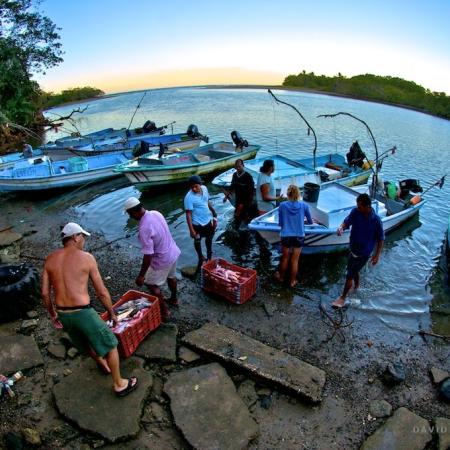
All along Costa Rica’s Pacific Coast, arriving tourists are shuttled inside the walls of beach resorts and not encouraged to leave until their reservations end. Each morning, fishers arrive at traditional docks just below the sight lines created by the resorts’ walls. Kept unaware of the traditional fishing activity below, guests languidly go about their vacations, soaking up the sun and sipping icy drinks by the pool, while below, at the estuary, fishers return from their nightly trips where local buyers meet them and purchase their entire catch of snappers for the bottom barrel price of $1.50 per fish. The fish are then loaded onto a truck and driven out of town and sold to another middleman who in turn sells them to another. Finally, the very same fish pass between enough hands to make their way back into town and inside the resort’s front gates. The snappers are then seared and served to guests in the hotel dining room under the label “fresh catch” for $18 a plate. With its economic future on the line, a group of small-scale snapper fishers from the district of Bejuco is standing up to long chains of custody and destructive fisheries. They have joined with researchers and non-profit members and scientifically proven the sustainability of their fishing habits. Armed with these results, they are applying for an international sustainability certification, lobbying the federal government to co-management systems and MPAs that would protect their interests from illegal fisheries, and redesigning the way fresh snappers are locally purchased and consumed. Because of its potential, Bejuco’s small-scale artisanal fishing community is too big to be ignored.


